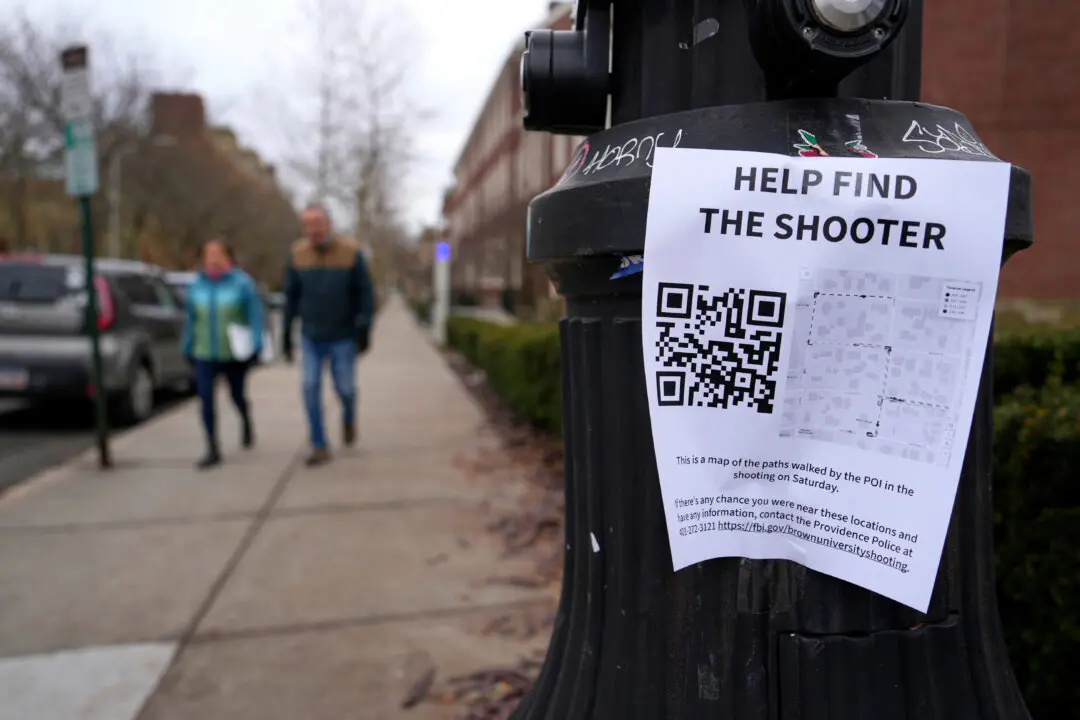PITTSBURGH—Gerald Boyes died in a police shooting while officers sought him in the bludgeoning deaths of his father and his father’s girlfriend. And stories of people on the lam from their probation or parole at the time the new, alleged crimes were committed aren’t isolated.
There are thousands more cases in which criminals wanted on a probation or parole violation commit a new crime before they are captured, a Pittsburgh Post-Gazette investigation found. There are shootings, robberies, killings. Chases, assaults, even a kidnapping.
The federal government counts more than 4 million people on probation, parole or a similar program in the United States—that’s more than the number of people in all of its prisons and jails combined. In 2014, the most recent year for which statistics are available, more than 350,000 probationers and parolees returned to jail—nearly 100,000 of them on new sentences.
Research shows that addressing violations quickly reduces the chance that probationers and parolees will go on to commit new crimes.
Yet a Post-Gazette review of records from some of the country’s largest counties found that it often takes officials months to track down violators.
Even in one of the top-performing places, Hennepin County in Minnesota, it took an average of 43 days to arrest a probation violator. In one of the slowest, Pima County in Arizona, it took more than twice that amount of time—91 days on average.
The Post-Gazette sought records on warrants issued in the 50 largest counties in 2013 and 2014 and received usable data from 17 of them. The lack of available data reveals the low priority the problem is receiving across the United States. There is almost no research focusing on efforts to track down people wanted on violation warrants.
The systems for monitoring people on probation and parole are so scattered, so poorly documented and so varied that it is extremely difficult to gather and compare data in a meaningful way.
Some agencies, such as the Nevada Department of Public Safety, only keep lists of people currently wanted on warrants, and said they would have to sort through thousands of case files to get past data. Other agencies, such as the Los Angeles County Superior Court, work on decades-old computer systems that make it difficult to extract information.
Many offices are stymied by budget constraints. In many cases, counties don’t have a person or a unit dedicated solely to tracking down violators. In some of those counties, officials don’t have a complete picture of how many people go on to commit new crimes while under their supervision.
“I suspect most probation departments. (if) somebody doesn’t show up, they issue a warrant and they wait for the police to pick them up,” said Edward Latessa, a longtime researcher based at the University of Cincinnati. “They figure, eventually, they’re going to do something.”
Chapter 1: Missed Chances—The Gerald Boyes Case
Gerald Boyes Jr. missed two meetings with his parole officer.
It was his second time on parole for robbery in Florida. He'd been sent back to prison before because he kept getting arrested. A warrant was issued.
Little else happened—until detectives were called to his father’s home in rural Kentucky this past April.
His father had been bludgeoned with a hammer in the back yard. His father’s longtime partner lay dead on the floor inside, surrounded by blood.
Detectives tried to reach Boyes to inform him of the deaths. They grew suspicious when he didn’t return their calls, said McCracken County, Kentucky, Sheriff Jon Hayden.
A quick check revealed that Boyes was wanted for a parole violation in Florida. McCracken County Detective Captain Matt Carter and his partner were driving to Florida to try to find Boyes when one of them ran his name through a database that includes the names of people who sell items at pawn shops. Boyes, they said, had just sold his father’s distinctive Harley Davidson wallet—which was missing from the crime scene.
They made a U-turn and began driving north, toward the pawn shop outside Chicago.
“That was huge,” Carter said. “That was one big piece of evidence that tied him to the double homicide and also gave us his whereabouts.”
He said that same database also showed that Boyes had pawned jewelry near Chicago a week or two prior—within days of his violation warrant being issued.





